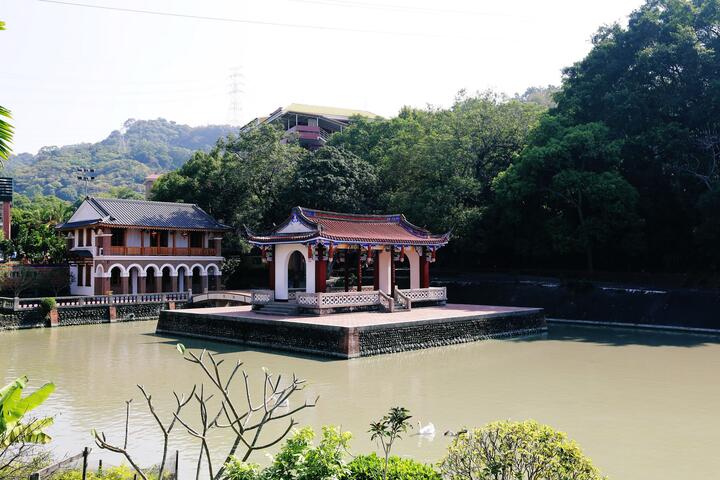Wufeng Lin Family Mansion and Garden Introduction
Wufeng Lin Residence is a collective name for the garden and mansion architecture group located in A-Zhao Mountain. It consists of three main parts: the Upper Residence, the Lower Residence, and the Lai Garden. The Lai Garden, where Ming Tai Commercial High School is located, was built by Lin Wen-chin, a scholar of the Lin family, to honor his mother. It later became widely known as the Wufeng Lin Family Garden throughout Taiwan. The garden has been constructed since the mid-Qing Dynasty, experiencing many changes in architectural styles over the years. In the later stages, new buildings and gardens appeared with a blend of Chinese, Western, and Japanese styles. Established in 1893, the Taichung Wufeng Lin Family Garden was severely damaged in the 921 Earthquake. However, as a site of historical and cultural significance, the descendants of the Lin family continue to strive for the restoration of the garden's historical appearance. The garden was originally built by the first-generation owner, Mr. Lin Wen-chin, to provide a place for his mother, Madam Luo, to live, and is currently located at the Lai Garden of Ming Tai High School. Early on, the garden featured twelve scenic spots, with the Wu Gui Building being its most important structure. According to research, the Wu Gui Building was first constructed in 1887 and was initially called the "Pu Chan Pavilion," a two-story wooden structure in the Minnan style. The first floor served as a living room, while the second floor was Madam Luo’s living quarters. The second-generation owner, Mr. Lin Hsien-tang, played a key role in promoting the spirit of the Lai Garden and rebuilt the Wu Gui Building in 1905, which became a hybrid style building of Chinese and Western influences. The first floor featured red bricks with Baroque-style arches, while the second floor was wooden with a traditional hard mountain-style roof, showcasing both Western and Taiwanese characteristics. During the Japanese occupation period, the Wu Gui Building became a gathering place for poets of the Li Society, a classroom for the "Summer School" in the cultural association, and an activity venue for the "Yi Xin Society" and "Yi Xin Academy," where Mr. Lin gathered Taiwan’s elites and preserved Han culture. The Lin Hsien-tang Memorial Museum was established in 2000 and expanded into the Wufeng Lin Family Garden Lin Hsien-tang Museum in 2019. The museum is located within the Wufeng Lin Family Garden - Lai Garden (Ming Tai High School), currently displaying original diaries of Lin Hsien-tang, personal letters, paintings, and precious artifacts such as old photographs, furniture, and clothing. The history of the Wufeng Lin family serves as a microcosm of a century of Taiwanese history, allowing the public to gain a deeper understanding of the historical and cultural heritage of important Taiwanese families through exhibitions and promotional activities. After the 921 Earthquake, with ten years of dedicated research and persistence, the Wufeng Lin Family Garden received support and assistance from the Cultural Heritage Administration and could finally rebuild the Wu Gui Building in the Lai Garden. During the reconstruction, traditional craftsmen, including carpenter Lai Qi-lin, sculptor Cao Ren-sheng, and mason Shi Kun-yi, collaborated using precious materials such as Taiwan's millennium cypress wood and handmade bricks, employing modern technology and traditional craftsmanship to restore the Wu Gui Building to its 1905 appearance.










































